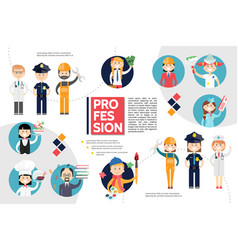Discover How Seasonal Elements Influence Commercial Outside Paint Success And Discover The Best Times To Make Sure Lasting Outcomes For Your Project
Discover How Seasonal Elements Influence Commercial Outside Paint Success And Discover The Best Times To Make Sure Lasting Outcomes For Your Project
Blog Article
Created By-Doherty Rosendal
When you're planning an industrial external paint job, seasonal elements can make or break your outcomes. You'll want to think about exactly how temperature level and humidity influence paint application and drying out times. Choosing the ideal season can ensure your paint adheres effectively and lasts much longer. But which periods are truly the very best for this sort of work? Let's discover the key elements that can affect your job's success.
The Influence of Temperature on Paint Application
When you're planning a business outside painting task, the temperature can significantly affect just how well the paint sticks and dries.
Preferably, fort worth painting contractors want to paint when temperatures vary between 50 ° F and 85 ° F. If it's also cool, the paint might not heal effectively, leading to issues like peeling off or splitting.
On the other side, if it's as well warm, the paint can dry also quickly, stopping correct adhesion and causing an uneven finish.
You should also take into consideration the time of day; early morning or late afternoon offers cooler temperatures, which can be extra favorable.
Constantly examine the supplier's recommendations for the particular paint you're utilizing, as they commonly offer guidance on the optimal temperature level range for optimum outcomes.
Moisture and Its Result on Drying Times
Temperature isn't the only environmental factor that influences your industrial outside paint task; humidity plays a substantial duty as well. High humidity degrees can decrease drying out times significantly, impacting the total top quality of your paint task.
When the air is saturated with moisture, the paint takes longer to cure, which can bring about issues like bad bond and a higher risk of mold growth. If you're repainting on an especially humid day, be prepared for extensive wait times between layers.
It's vital to keep track of regional climate condition and plan accordingly. Ideally, aim for moisture levels in between 40% and 70% for optimum drying out.
Keeping these consider mind guarantees your job stays on track and delivers a long-term finish.
Best Seasons for Commercial Exterior Paint Projects
What's the very best time of year for your business exterior painting projects?
Spring and early fall are typically your best options. Throughout these seasons, temperature levels are moderate, and humidity degrees are often lower, creating ideal conditions for paint application and drying.
Prevent summer season's intense heat, which can cause paint to completely dry as well rapidly, causing inadequate bond and finish. In click the up coming site , winter season's cool temperatures can impede correct drying out and treating, taking the chance of the long life of your paint job.
Aim for days with temperature levels between 50 ° F and 85 ° F for optimum outcomes. Bear in mind to check the regional weather report for rainfall, as wet conditions can spoil your task.
Preparation around these variables guarantees your paint task runs smoothly and lasts much longer.
Conclusion
In conclusion, planning your commercial external paint tasks around seasonal factors to consider can make a significant difference in the result. By organizing work throughout the suitable temperatures and humidity levels, you'll make sure better attachment and drying times. Bear in mind to watch on regional weather prediction and select the correct time of year-- springtime and very early autumn are your best bets. Taking these steps will aid you accomplish a sturdy and specialist coating that lasts.
